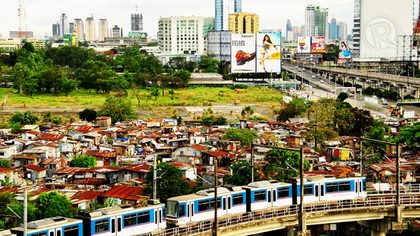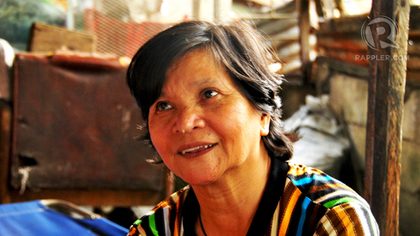SUMMARY
This is AI generated summarization, which may have errors. For context, always refer to the full article.

MANILA, Philippines – A different wind blowing in the post-Marcos years had already begun to bring radical change in government policy on housing for the urban poor.
In March of 1992, President Corazon Aquino signed RA 7279 (aka the Urban Development and Housing Act or Udha) – “to provide the underprivileged with decent housing at affordable cost, basic services and employment opportunities.”
In 1994, then President Fidel V Ramos signed the Comprehensive Shelter Finance Act (Cisfa), giving Udha muscle. (Ramos is this writer’s uncle.)
But Udha had not been fully implemented. Coordination between local government units, as well as national housing agencies, was not always done consistently.
At the time, national implementing agencies led by the National Housing Authority (NHA) and the Housing and Urban Development Coordinating Council (HUDCC) became unpopular among urban poor groups and the NGOs supporting them.
Showdown
On the ground, meanwhile, the San Roque Community Council – North Triangle Alliance (SRCC-NTA) was mulling over UDHA and CISFA. Poring over maps, they discovered North Triangle to be part of the new national government center planned in 1968. They learned that the NHA “owned” its 56-plus hectares and released them for sale or lease to the private sector in 1987.
They read the Ramos executive order dated 1993, directing that “All revenues accruing in the development of the property shall be utilized for the Social Housing Program of the NHA.” Now they could inform Sitio San Roque of what was possible with unity.
Teodosia “Teody” Barquio-Gacer and Edwin Nakpil played important roles in the Homeowners and Neighborhood Association (Hona) in the North Triangle.

The two leaders and Hona participated in SRCC only as members – until the day, when its chair, the barangay captain, ordered a P600-membership fee and met with NHA and City Hall without notifying the membership.
They called for a public showdown. Two years after that forced showdown, Edwin was elected chairman and Teody, secretary-general of SRCC-NTA.
Political struggle
A fault line between quick money and an organic community’s collective strength had emerged. In 1997, with money in their pockets, 2,000 families of an original 10,000 relocated to Montalban, giving way to an MRT station and the Trinoma-Ayala Mall.
Vicious political struggle followed. Edwin Nakpil ran for barangay captain in 1997 and was defeated, with goons allegedly running away with ballot boxes. With emotions rising to a pitch, Edwin would suffer from a serious stomach wound and a broken cheekbone dealt by political opponents in the following years.
Meanwhile, the SRCC wasted no time writing “Erap Para sa Mahirap” when he became president in 1998. On a visit to San Roque the following year, he promised to let them stay.
On the strength of that promise, the SRCC marched to support him as Edsa II massed to impeach him in 2000-2001. Teody regrets none of their political counter-flow: “Poverty would not have been explored if we hadn’t marched.”
The Arroyo years
Gloria Macapagal-Arroyo, too, visited San Roque during her first year in office, with her first Cabinet appointee Dinky Soliman. This Social Welfare secretary was no stranger to San Roque; her CO-TRAIN Multiversity trained them in community organizing.
After that visit, Arroyo released P2-M, building them a community health center, two schoolhouses for Grades 1 and 2, and paid for teachers’ salaries.
Soliman says that Arroyo also “proclaimed occupied land as alienable and disposable to allow occupants to stay, but many pieces of land were not distributed.”
Quite possibly, NHA was unable to move as quickly as it might have wanted to; neither was it able to organize as many consultations as it would have hoped.
Dark years after
Dark years followed in San Roque. In 2004 and 2005, 4 mysterious fires razed 2,750 houses – their causes undetermined to this day. Months later, the NHA moved to lease 10 hectares of cleared North Triangle land.
In 2007, Arroyo issued EO 620, “speeding up the development of the East and North Triangles and the Veterans Memorial Area of Quezon City as a well-planned, integrated, environmentally-balanced mixed-use development model.” Next, she endorsed a World Bank concept: the Quezon City Central Business District (QCCBD).
A worried SRCC consulted an old ally in the Institute of Popular Democracy, which had earlier made a stand for their onsite relocation.
The idea of building medium-rise buildings (MRBs) right on North Triangle emerged. Udha’s mandate would allow the SRCC to buy the land; Cisfa could help them finance the 3-story MRBs.
The people themselves could build them to combine shelter with commercial areas. Rent and forced savings would pay the loan. They also dreamt of becoming a resident labor force for the Quezon City commercial district – in the ideal “mixed use” manner mandated by Udha.
Unbeknownst to them: the NHA had already signed a Joint Venture Agreement (JVA) with Ayala Land Inc. (ALI) in August of 2009 – which therefore suggested that they would eventually have to relocate elsewhere, no matter what.
However, lawyers later pointed out that, in the spirit of Udha, the NHA could have set aside a portion of North Triangle for long-standing informal settlers in the JVA, but failed to.
Forced demolitions
But since ALI had legitimately bought the land at commercial value and had also released P1.159-B to the NHA for ISF relocation, forced demolitions were scheduled during Arroyo’s final year. They were halted by violent protest and a TRO from a case filed by the Maralitang Nagkakaisang Metroside, an SRCC-NTA member organization.
The next day in New York, President Benigno Aquino III ordered a suspension of involuntary relocation. It was only his third month in office.
In December 2010, he created a Task Force for Informal Settlers under Department of Interior and Local Government (DILG) Secretary Jesse Robredo, which is drafting an Informal Settler Families Framework for Housing.
Its obstacle course is steep: laws in the Aquino-Ramos and Arroyo years at cross-purposes, turf wars in government agencies, corrupt bureaucrats and local leaders, long-standing syndicates, political ambition and, finally, deeply-ingrained mindsets about “squatters.”
New demolitions in North Triangle scheduled in September 2011 further failed to materialize. A human barricade paralyzed traffic on Edsa, and protesters threw San Roque mud at NHA and ALI offices. Swords crossed between the urban poor and NHA over its contract with ALI in a dialogue at the NHA the following November.
Impassioned debate in Camp Crame followed in December, with DILG Secretary Robredo, National Anti-Poverty Commission Secretary Joel Rocamora and NHA General Manager Chito Cruz all weighing the relative merits of onsite relocation and off-site relocation in Camarin, Caloocan. But the SRCC had had enough of high-level dialogues that did not integrate their views.
The future
“Kausapin niyo naman kami (Talk to us)!” Edwin Nakpil shouted at the audience. Eleven days later, Robredo faced the SRCC at his persuasive best: “Your target is a permanent place. Government’s is to reduce poverty. Set aside the idea of onsite relocation for a while and seek out other choices of land among you. With cooperatives and capacity building, there could be 10% growth within 6 months to a year.”
“I trust him,” said Teody. “He respects and listens to us.”
“Our coop could become a manpower agency and a supplier of housing materials,” said Edwin. Robredo met with them again on Jan 13, 2012 on all-important details: other pieces of public land close to their livelihoods in Quezon City, and a trust fund for land and housing.
His task force has reportedly succeeded in programming P10-B from the P50-B total package for the resettlement of informal settler families in danger zones. President Aquino will also reportedly be releasing P450-M for an MRB in Camarin, Caloocan for the North Triangle settlers.
For North Triangle and other informal settlers throughout the country, perhaps there just might be hope for a better future. – Rappler.com
Assistant Secretary Shahani heads communications for the Human Development and Poverty Reduction Cabinet Cluster and is adjunct faculty with the Center for Development Management at the Asian Institute of Management. Sylvia L. Mayuga has been a published essayist, regular columnist, sometime-poet and occasional documentary filmmaker since the early ’60s.
Add a comment
How does this make you feel?
There are no comments yet. Add your comment to start the conversation.